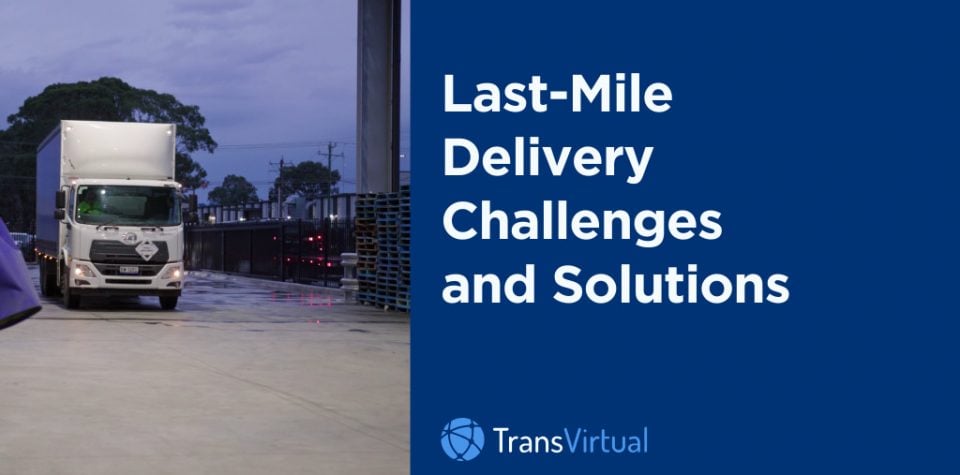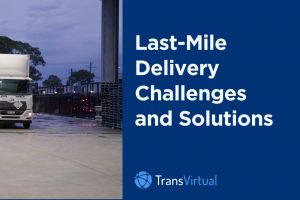Table of Contents
The growing demand for swift service has propelled the need for last-mile delivery to new heights.
Described as the final step of the supply chain process, last-mile delivery has faced its own set of challenges – especially in countries that are as vast as Australia.
Addressing these challenges head-on cannot be overstated today. Last-mile delivery, after all, is the final touchpoint of the supply chain process. Consistent success at this stage leads to customer loyalty and improves brand reputation.
That said, we’ve put together a guide exploring the challenges of last-mile delivery and the opportunities in the market.
What are the Key Challenges of Last Mile Delivery Today?
The goal of last-mile logistics is to get packages to customers asap. Customers want deliveries to be fast and, where possible, for free.
The challenge? The last-mile happens to be the most time-consuming and expensive stage of the supply chain. Every added challenge drives the cost of deliveries higher.
Challenge #1 Rising costs
Rising gas prices, rising vehicle maintenance costs, rising labour costs—you get the gist.
For the shortest part of the delivery process, last-mile delivery can really end up raking up your monthly bills.
On top of operational costs, there are unexpected expenses that may arise during delivery, such as order cancellations.
Challenge #2 Order delays
Delayed deliveries are another significant challenge in last-mile logistics. Uncontrollable circumstances like adverse weather conditions or infrastructure issues disrupt delivery schedules.
Moreover, peak seasons and driver shortages compound order delays, impacting service reliability.
Challenge #3 Distances and accessibility
Deliveries are made across various locations, from business districts to personal residences. In urban areas, traffic congestion and limited parking zones are some of the biggest location-related challenges.
Rural areas don’t have it easy either. Unpaved roads and address accessibility aggravate the growing challenges of last-mile delivery.
Challenge #4 Reducing carbon footprint
Ensuring eco-friendly last-mile deliveries poses a challenge, as they are the largest contributors to carbon emissions. This raises a major environmental issue that companies and policymakers need to address.
Addressing Last-Mile Delivery Challenges
1. Invest in the right technology
It’s a tale as old as time: Fail to innovate and you get left behind.
You’d be surprised to learn how many logistics companies still rely on outdated processes. The obvious drawbacks are the lack of visibility and tracking. Paper trails are also messy and hard to trace.
Last-mile delivery benefits greatly from the right tech in various ways, including:
- Advanced routing software leverages algorithms to plan the most efficient delivery routes.
- Technologies such as GPS tracking and mobile apps provide logistics managers and customers with real-time visibility into their deliveries.
- Expand delivery options by integrating with multiple carriers, an ideal solution for businesses that deliver to remote or inaccessible areas.
- Companies can forecast demand and anticipate peak delivery times with predictive analytics.
2. Optimise delivery routes
Route optimisation is exactly as its name implies. It’s determining the most efficient delivery routes.
But while its description might be basic, optimising routes for last-mile delivery is anything but.
Technology such as machine learning models and algorithms ease these complexities by computing the most effective routes, taking into account factors like delivery points, traffic, and delivery timeframes.
Platforms like TransVirtual offer comprehensive last-mile delivery route optimisation to tackle the challenges of fast delivery:
- Bespoke process improvements for every depot, driver, and package.
- Dynamic route planning, so traffic updates are communicated to drivers in real-time.
- Turn-by-turn navigation to resource unnecessary detours and delays.
- Detailed reports and analytics (on routes, deliveries, and drivers) to help you optimise delivery operations.
Logistics companies should lean towards dedicated route planning and optimisation software to streamline their last-mile deliveries. Aside from automating the process, it also positively impacts their bottom line by reducing fuel and vehicle maintenance costs and boosts customer satisfaction.
3. Improve communications
As with any business function, efficient communication is the key to successful last-mile deliveries.
For customers, there is great demand for flexibility and timely deliveries. They want to be informed regularly about what’s happening with their packages.
Internally, communication between teams helps ensure everyone is aligned with schedules and delivery expectations.
To encourage collaboration and connect with customers effectively, remember these tips:
- Exchange information in real-time: Cloud-based tools, such as online collaborative platforms and TMS, allow teams to track shipments, manage inventory levels, and make informed decisions.
- Get supply chain visibility: Leverage platforms and software that offer insights into inventory levels, order statuses, and shipment. This empowers stakeholders to retrieve critical data and make informed decisions to minimise delays and improve warehouse operations.
- Provide clear and timely communication to customers: Proactive notifications, customer portals, and even electronic proof-of-delivery are surefire ways to eliminate uncertainties and reduce the need for follow-up inquiries. It’s also an efficient way to significantly reduce delivery errors!
In conclusion, clear and transparent communication remains a critical factor within the delivery process. By eliminating delivery roadblocks, companies curtail unnecessary expenses and gain a competitive advantage.
Tackle Last-Mile Delivery Challenges with TransVirtual
Optimising last-mile logistics isn’t a choice but is imperative for meeting consumer demand and ultimately, growing your bottom line. That said, an intuitive last-mile solution helps you bypass any roadblocks you might encounter.
TransVirtual offers a range of operational features including load planning, task allocation, and dynamic routing and tracking. Talk to our experts today and surmount any challenges in the last-mile phase!


